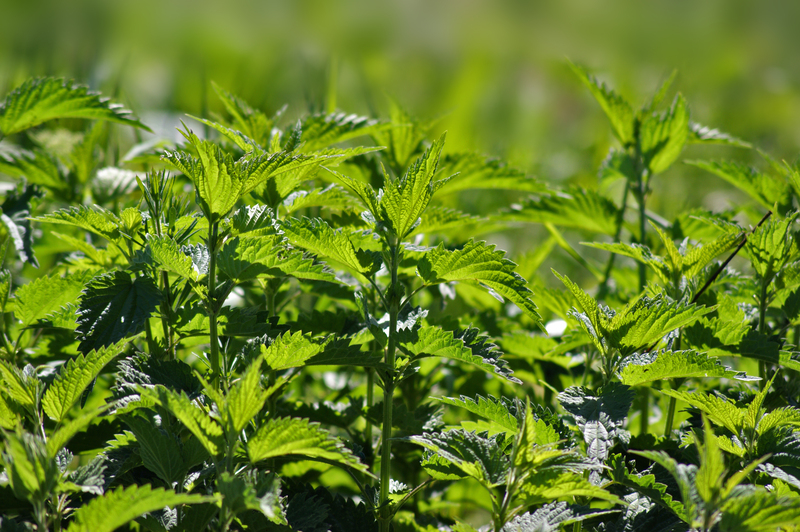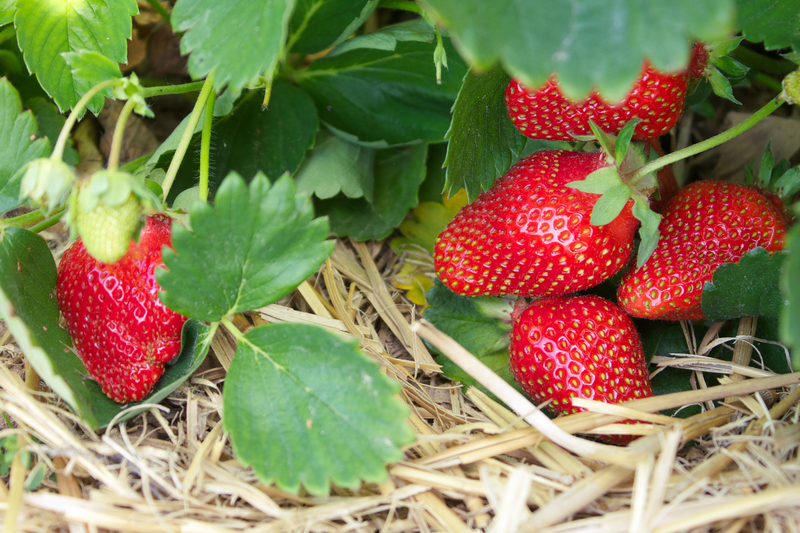Creating a Good-Natured Garden for Little Explorers
Posted on 25/09/2025
Creating a Good-Natured Garden for Little Explorers: A Comprehensive Guide
Are you looking to cultivate a vibrant, safe, and good-natured garden tailored for your little explorers? Gardens can be so much more than just green spaces -- they are living, breathing classrooms where children's curiosity can bloom! In this article, we'll take you on a journey through designing and nurturing an outdoor haven that's as magical as it is educational. Discover playful features, sensory wonders, wildlife-friendly elements, and practical tips to make your child's garden both an adventure zone and an oasis for the imagination.
Why a Good-Natured Garden is Essential for Kids
A kid-friendly garden isn't just about bright flowers and soft grass; it's a space where children can develop a lasting bond with nature. *Studies have shown* that children who spend more time outdoors develop better motor skills, higher creativity, and a profound sense of stewardship for the environment. With thoughtful planning, your backyard garden can become an arena for discovery, play, and holistic development.
- Fosters Sensory Growth: Provides tactile, visual, auditory, and olfactory experiences.
- Encourages Curiosity: Instills a scientific temperament through hands-on exploration.
- Nurtures Responsibility: Kids learn the value of caring for living things.
- Boosts Emotional Well-being: Nature exposure reduces anxiety and promotes happiness.
Choosing the Best Location for Your Nature Garden
Location is key when designing your nature-inspired garden for children. Consider visibility--can you see the play area from your kitchen or living room window? Sunshine and shade matters too; a mix ensures year-round usability. Safety should always come first, so avoid proximity to driveways, busy roads, or hazardous water features.
- Visibility: Keep an eye on little adventurers as they play.
- Accessibility: Ensure easy access for both adults and children.
- Shade: Utilize trees, pergolas, or shade sails.
- Boundaries: Use natural hedges or picket fences to define the play space.
Designing an Inviting and Safe Play Area
A garden for young explorers must be welcoming and secure. Invest in soft landscaping, such as grass or bark mulch to cushion tumbles. Avoid toxic plants (like foxglove and oleander) and sharp objects. Including winding paths, stepping stones, and small hills make your garden feel like a real adventure.
- Sensory Pathways: Mix gravel, wooden planks, and smooth stones for different textures.
- Secret Hiding Spots: Willow dens or bean teepees for cozy, imaginative play.
- Edible Zones: Strawberry patches or mini vegetable beds for safe foraging.
- Splash Zones: Use small, shallow basins for water play--but always supervise!
Plant Selection: The Heart of a Good-Natured Garden for Kids
Your child-friendly garden comes alive with thoughtfully chosen flora. Prioritize non-toxic, hardy, and sensory plants that invite touch, smell, or taste. Mix perennials and annuals, focusing on native species for easier care and better wildlife support.
Some top picks for a good-natured children's garden include:- Lamb's Ear: Fuzzy leaves perfect for sensory stroking.
- Sunflowers: Towering, cheerful giants that invite pollinators.
- Lavender: Invigorating scent for calm, aromatic adventures.
- Snapdragons: Fun for little fingers to pinch open their 'dragon mouths.'
- Mint Varieties: Edible and aromatic ground covers.
- Strawberries and Blueberries: Delicious fruits your child can harvest.
- Grasses and Bamboo: Add movement and whispering sounds in the breeze.
Aim for diversity--invite bees, butterflies, ladybirds, and even hedgehogs into your wildlife-friendly garden. Native wildflowers, log piles, and shallow ponds bring a slice of the wild right to your doorstep.

Essential Features in a Nature Garden for Children
A good-natured garden for kids brims with opportunities for play, discovery, and learning. Here are must-have elements to maximize engagement and promote outdoor fun.
1. Sensory Corners
Create sections that stimulate all five senses. Use herbs like rosemary and sage for scent, ornamental grasses for sound, plants with contrasting textures, and taste-safe options like nasturtiums. Add wind chimes or water features for gentle auditory stimulation.
2. Wild Corners and Mini-Habitats
Dedicate areas for insects and birds. Build a simple bug hotel from bamboo and sticks, let a patch of grass grow wild, or install a bird feeder near a viewing bench. Observe nature's visitors together--every day brings a new surprise!
3. Discovery Trails
Design winding paths with stepping stones, log rounds, or mosaic tiles. Hide treasures along the way such as painted rocks, fairy doors, or secret boxes. This transforms even a small garden into a magical exploration trail.
4. Edible Gardens
A kitchen garden enthralls children. Mini raised beds or container gardens with peas, cherry tomatoes, radishes, and herbs give children the thrill of planting, caring, and harvesting. Involve them from seed to supper!
5. Artistic Touches
Foster creativity with garden art projects: painted pebbles, mosaics, homemade wind mobiles, and stepping stones decorated with glass beads. Encourage children to make signs for plants or create a weatherproof fairy house.
6. Hideaways and Shelters
Kids love secret dens! Construct simple teepees with poles and climbing beans or morning glories, use a pop-up tent, or make a willow dome. Even a large cardboard box can become a garden fort with a little imagination.
7. Mud Kitchen and Water Play Zones
Set up a muddy corner with old pots, pans, and ladles for endless pretend baking. Incorporate safe, flowing water features like a hand pump or small stream. Mud and water play are essential for tactile and imaginative development.
8. Quiet Corners
Every explorer needs downtime. Provide a hammock, beanbag, or outdoor cushions tucked under a tree for reading, sketching, or simply cloud-watching in their own peaceful retreat.
Wildlife-Focused Gardening: Teaching Kids to Care for Nature
A wildlife-friendly garden supports ecosystem health and teaches children stewardship. Show them how a pile of twigs shelters hedgehogs, or a shallow dish of water helps bees on hot days. Build simple feeders, put up nesting boxes, and identify visiting species together.
- Plant native flowers attracting butterflies and bees.
- Add bug hotels for ladybugs and solitary bees.
- Leave leaf litter and rocks for beetles and spiders.
- Install a small wildlife pond; safety is key--cover it with mesh if needed.
Gardening with Children: Making It Meaningful
The true essence of a good-natured outdoor space is shared experiences. Involve your little ones at every stage--planning, planting, watering, and observing. Let them make mistakes, ask questions, and celebrate successes.
- Let them choose seeds: Give options for quick-growing plants or old favorites.
- Assign tasks: Watering, weeding, or harvesting teach teamwork and responsibility.
- Use child-sized tools: Safety and comfort enhance their engagement.
- Keep a nature diary: Record sightings, growth, and funny happenings.
- Celebrate their efforts: Host garden tea parties or "harvest feasts" with the bounty.
Seasonal Activities in Your Little Explorer's Garden
Every season offers new wonders. Autumn is perfect for leaf crafts and collecting seeds. Winter calls for wildlife tracking and feeding birds. In spring, planting bulbs and spotting the first beetles excite young observers, while summer brings butterfly hunts and picnics under shady trees.

Encouraging Inquiry and Curiosity
A good-natured garden for children should foster questions. Why do sunflowers follow the sun? Where do snails hide during the day? Provide simple field guides, magnifying glasses, binoculars, and bug viewers. Set up a weather station to record rainfall, wind, or temperature, nurturing future scientists.
Garden Safety Tips for Little Adventurers
While fostering fun, never forget safety. Use non-slip surfaces, keep toxic supplies out of reach, and check regularly for potential hazards such as sharp branches or tripping hazards. Educate children to be gentle with wildlife and respect all living things.
- Supervise water play at all times.
- Secure sheds and tools with child-proof locks.
- Choose native, non-toxic plants as much as possible.
- Provide sun protection: hats, sunscreen, and shaded areas.
Inspiring a Love of Nature That Lasts a Lifetime
Your good-natured discovery garden can be a launchpad for a child's lifelong appreciation of the environment. Share stories about pollinators, plant folklore, or where food comes from. Host family bug counts or "mini scientist" days, strengthening bonds and connections to the natural world.
Final Thoughts: Growing Joy in a Garden for Children
A good-natured garden for little explorers is more than a landscaping project--it's a living storybook, a playful laboratory, and a place where memories grow. Whether you have a tiny courtyard or a rambling backyard, it's possible to create an uplifting, safe, and intriguing nature space for your children.
*Start today*. Let your children's laughter ring among the flowers, let their wonder sprout with the seeds, and your own joy grow alongside them in your good-natured children's garden. Harness the tips in this guide for an outdoor space where every day is an adventure, every season is a lesson, and nature is the world's best teacher.
Ready to transform your backyard into a paradise for playful learning? With a little planning and a lot of love, your good-natured garden for little explorers will become the best place on earth for your family to grow--together.

